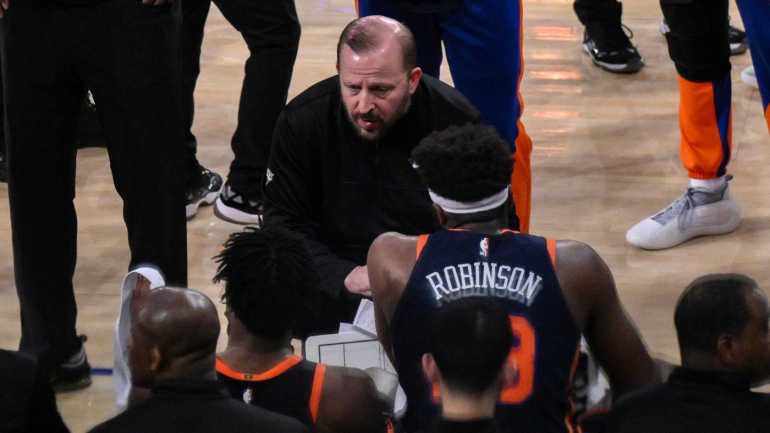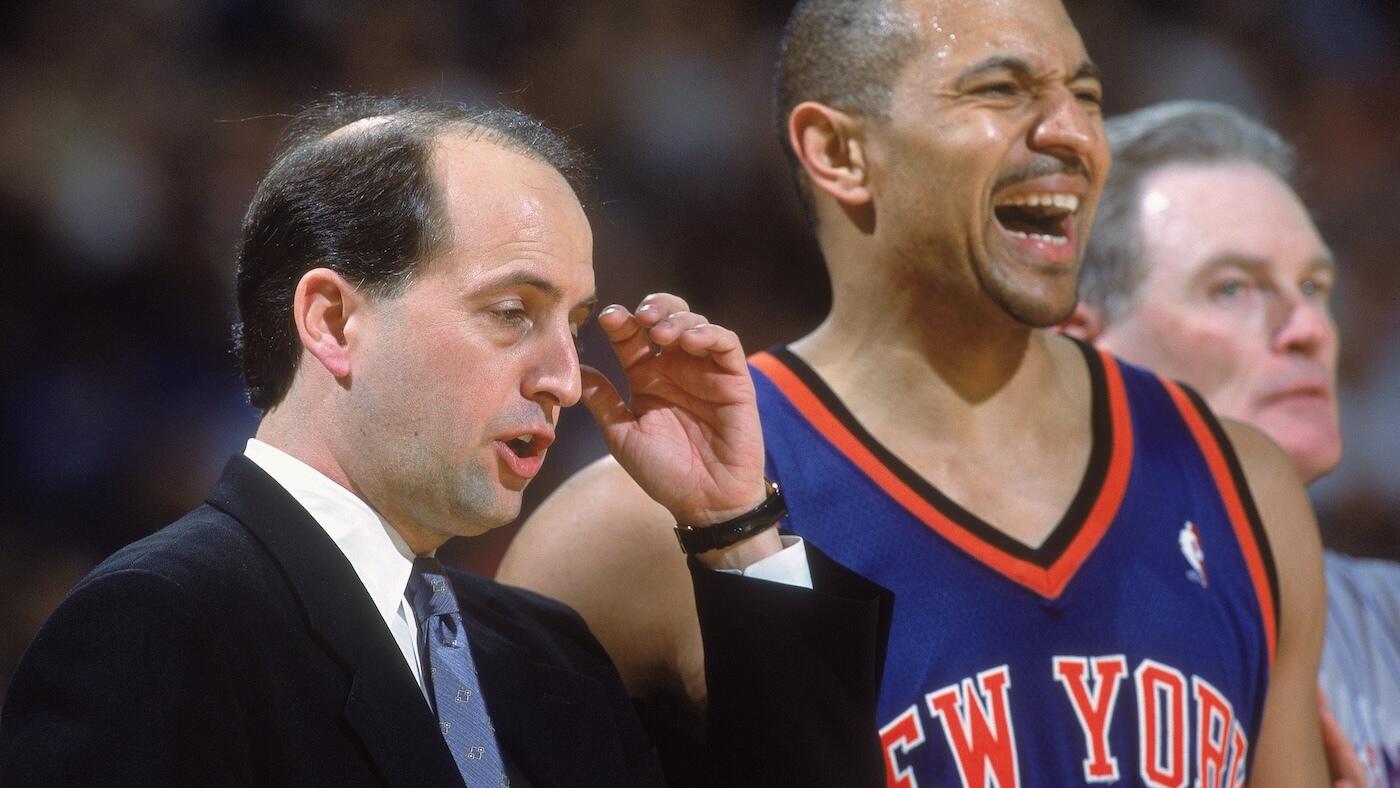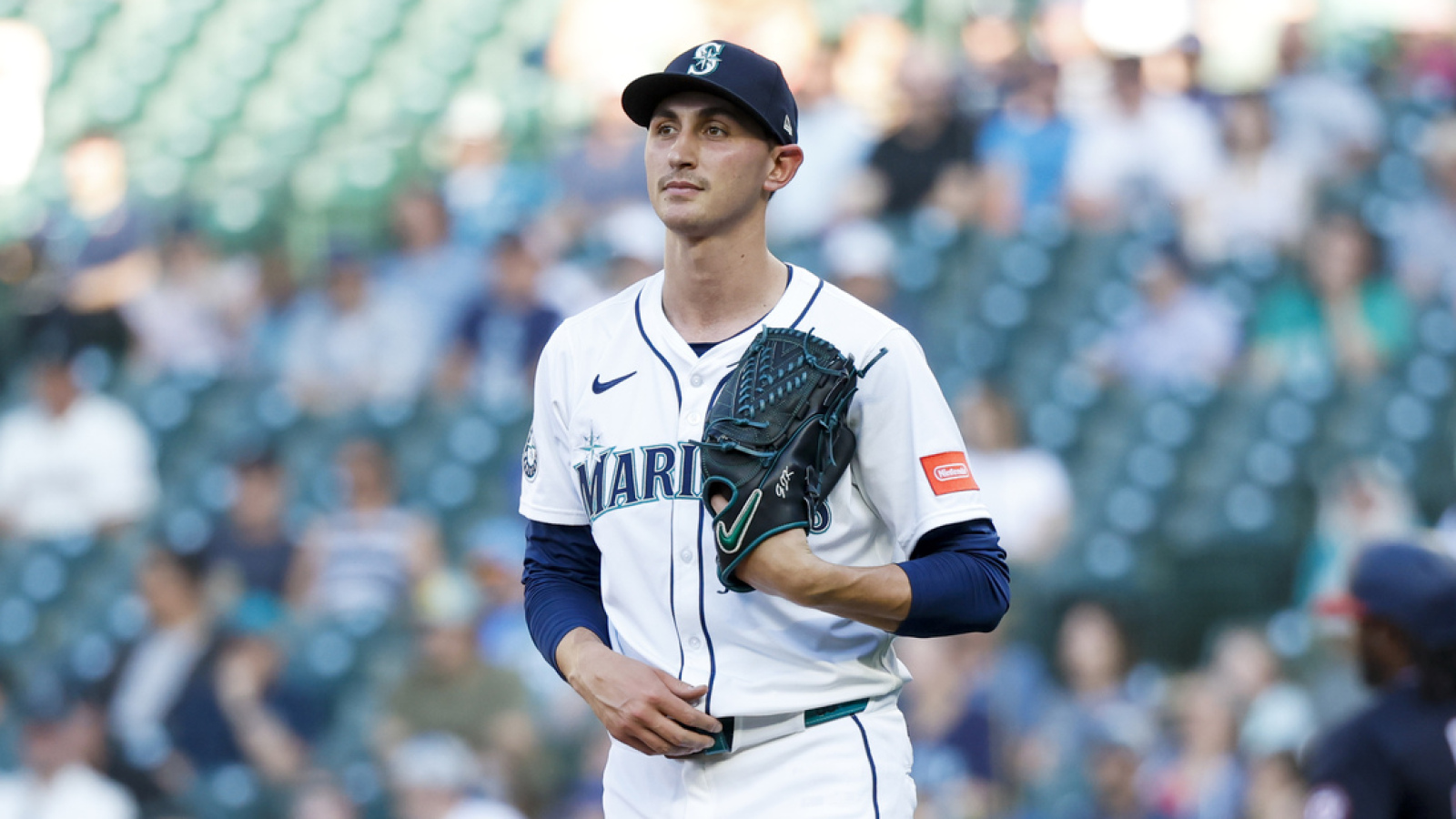
“The game tells you what to do,” Tom Thibodeau likes to say. When it comes to the 2024-25 New York Knicks, though, it sometimes seemed like we were all watching different games. The Knicks went 51-31 in the regular season with a top-five offense, then played three straight six-game series in the playoffs, going 10-8 in a six-week span that featured a nail-biter just about every other day. Was Thibodeau an idiot for trotting out the same starting five that kept getting off to terrible starts against the defending-champion Boston Celtics? Was he a genius for baiting the Celtics into stagnant offense, allowing the Knicks to repeatedly overcome those terrible starts? It depended on who you asked. In New York, Thibodeau’s future was a constant topic of conversation throughout the playoffs.
To some, eliminating Boston should have immediately ended the conversation. But then they lost to the Indiana Pacers for the second year in a row. One could reasonably argue that, rather than being some sort of terrible failure, the loss simply illustrated how thin the margins are at this time of year, as the conference finals could have played out totally differently if the Pacers hadn’t pulled off an extraordinary unlikely comeback in the opener at Madison Square Garden. One could make the same point, however, about the Knicks’ late-game heroics against not only the Celtics, but the Detroit Pistons in the first round.
New York fired Thibodeau on Tuesday, citing its singular focus on “winning a championship for our fans.” Maybe you think this is a courageous decision, as the franchise has given less weight to how far the team got than how it got there. Maybe you think this is an insane decision, as Thibodeau overachieved with a shallow roster and is being punished for the sins of the front office. Personally, I can kind of get down with the this-is-gutsy camp, but only if the Knicks nail the next hire. And I can’t say that the this-is-nuts camp is wrong, exactly — this group had first- or second-round exit written all over it based on the regular season and finished two wins from the Finals — but, if there were legitimate reasons to fire Thibodeau early in the Pistons series, I’m not sure that Boston melting down afterward invalidates them.
The Knicks had an impressive, sometimes frustrating, often confusing and ultimately successful (relative to expectations, anyway) season under Thibodeau in 2024-25. The whole thing was complicated, as is this firing, so it’s OK if you’re holding multiple conflicting ideas in mind. Here are mine:
What Thibodeau didn’t do
In late February, after a win against the Brooklyn Nets, Oklahoma City Thunder coach Mark Daigneault said his team was still in the “early stages of understanding” how big men Chet Holmgren and Isaiah Hartenstein worked together. They weren’t healthy at the same time for the majority of the season, so Daigneault was starting the double-big lineup virtually every game and using it against all sorts of different lineups. The point was to gather information.
“It would be irresponsible of us to not know everything there is to know about every part of our team,” Daigneault said. “And that’s a part of our team that we don’t know a lot about and that we have to get better at. And through these 24, 25, 26 games, however many there are left, we need to work on it, we need to understand it, and then by the end of the season, we’ll have taken the team as far as we can, we’ll know everything that there is to know, we’ll have worked on everything that there is to work on with the 82 games we have, and that’s our mindset. And that’s going to be our mindset down the stretch of the season here, not only with the double-big, with everything.”
Two days later, Knicks center Mitchell Robinson made his season debut. He played 12 minutes, but didn’t share the floor with Karl-Anthony Towns. Fourteen times in the regular season, Robinson and Towns were active in the same game, but Thibodeau used the double-big lineup for a total of only 47 minutes (or 3.4 minutes per game). In contrast, Holmgren and Hartenstein were active in the same game 20 times, and they logged 316 minutes together (or 15.8 minutes per game).
The issue here is not just that Thibodeau barely tried a lineup configuration that everyone around the league had been discussing since the day New York acquired Towns. It’s that, more broadly, Thibodeau was not inclined to use the regular season as an information-gathering exercise. The Knicks’ regular starting lineup logged 226 more minutes than the league’s second-most-used lineup (in seven fewer games), and it averaged 19.6 minutes per game. In the last seven seasons, only five other lineups (minimum 25 games) have logged more than 18 minutes per game together. (For those clamoring for Michael Malone to replace Thibodeau: Three of those lineups were from Malone’s Denver Nuggets.)

When New York’s starters were struggling in the playoffs, Thibodeau’s staff didn’t have a ton of data about the alternatives. Before he put Robinson in Josh Hart‘s place in Game 3 of the Pacers series, that five-man unit had played a total of seven minutes in two playoff games and six possessions in one regular-season game. That’s it.
In fairness to Thibodeau, the primary reason the Knicks leaned on their starters so much is that they didn’t have much depth. They swapped two rotation players for one in the Towns trade, and Robinson was hurt for for most of the season. Most of the fans who were screaming for rookie guard Tyler Kolek to get more run during the regular season, though, weren’t doing so because they were convinced that he’d be able to hang in this year’s playoffs. They just knew that he definitely wouldn’t be able to hang if he hardly got any opportunities.
‘Winning a championship,’ huh?
OK, here’s the part where I defend the guy who didn’t experiment at all and presided over a team that couldn’t sustain its elite offense after the All-Star break and couldn’t consistently get stops against elite competition (with the exception, somehow, of the second round of the playoffs): Thibodeau was not working with a championship roster.
I was at MSG for all of the Knicks’ playoff games, and part of me still can’t believe that they actually made the conference finals. Given how easy it was for opponents to find a mismatch, New York wildly overachieved. This team found ways to win playoff games it seemed to have no business winning. Often, it was Jalen Brunson making superstar shots in crunch time, but it was also Robinson generating extra possessions, Towns galloping to the rim for and-1s, Hart attacking in transition, Bridges making midrange jumpers and OG Anunoby bailing out ugly possessions with stepback 3s. Thibodeau may have ignored Landry Shamet for much of the postseason, but he wasn’t the first coach to do so. He also unleashed Shamet as a point-of-attack defender in the conference finals. The crowd chanted Shamet’s name in Game 5!
Another coach could get a similar group of players to generate more 3s next season. Another coach could play the starters fewer minutes, make the offense less Brunson-centric, mix up the defensive coverages more often and come up with better solutions for opposing teams putting a center on Hart and a wing on Towns. All of that would be nice, but I can’t imagine it adding up to a championship.
Thibodeau is not a perfect coach, but he’s not as flawed as the roster is. The Knicks are built around a 6-foot-2 guard and a 7-foot center who have massive targets on their backs on defense. Given their payroll and all the picks they traded away to put this team together, there is pressure to win now and win big, but, uh, didn’t they just kind of do that?
Firing Thibodeau seems like a particularly weird move in light of all the instability and losing that preceded his tenure. And in light of New York’s stated rationale, the only way the decision can be vindicated is if it’s just the first step.


